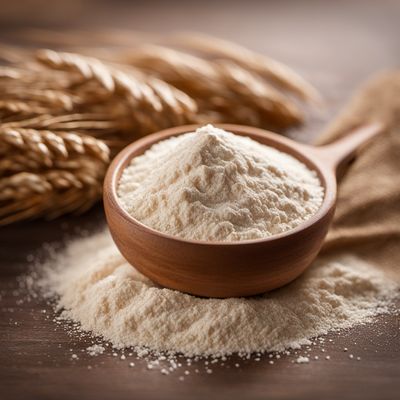
Ingredient
Rye flour, refined
The Versatile Grain: Refined Rye Flour
Rye flour, refined, is a finely milled flour made from the endosperm of rye grains. It has a light brown color and a slightly nutty flavor. With a finer texture compared to whole rye flour, it is often used in combination with other flours to create bread, pastries, and other baked goods. Refined rye flour adds a unique depth of flavor and a dense, moist texture to recipes.
Origins and history
Rye has been cultivated for centuries, with its origins traced back to ancient civilizations in Asia and Europe. It has played a significant role in the culinary traditions of countries like Germany, Russia, and Scandinavia. Rye flour gained popularity due to its ability to grow in harsh climates and its nutritional value, making it a staple in many traditional dishes.
Nutritional information
Rye flour, refined, is a good source of dietary fiber, providing essential nutrients such as manganese, phosphorus, and magnesium. It is also lower in gluten compared to wheat flour, making it a suitable option for individuals with gluten sensitivities or those looking for alternative flours.
Allergens
Contains gluten.
How to select
When selecting refined rye flour, look for a well-packaged product with a fine texture and no signs of moisture or clumping. Opt for brands that use high-quality rye grains and have a good reputation for producing consistent results.
Storage recommendations
To maintain the freshness and quality of refined rye flour, store it in an airtight container in a cool, dry place, away from direct sunlight. Proper storage will help prevent the flour from absorbing moisture and developing a stale taste.
How to produce
Rye can be grown in temperate regions with well-drained soil and moderate rainfall. It requires proper soil preparation, regular watering, and protection from pests and diseases. With the right conditions, amateur gardeners can successfully grow rye for personal use.
Preparation tips
Before using refined rye flour, sift it to remove any lumps and aerate it for better incorporation into recipes. It is commonly used in combination with wheat flour to create bread, pancakes, muffins, and other baked goods. Refined rye flour can also be used as a thickening agent in soups and stews.
Substitutions
Whole wheat flour, spelt flour, or barley flour can be used as substitutes for refined rye flour, although they may alter the flavor and texture of the final product.
Culinary uses
Refined rye flour is commonly used in traditional European bread recipes, such as German rye bread and Swedish limpa bread. It is also used in the production of rye crackers, cookies, and pastries. Additionally, refined rye flour can be incorporated into various international cuisines, including Russian, Scandinavian, and Eastern European dishes.
Availability
Commonly available in Europe, particularly in countries like Germany, Russia, Sweden, and Finland. It can also be found in specialty stores or online retailers in other regions.


